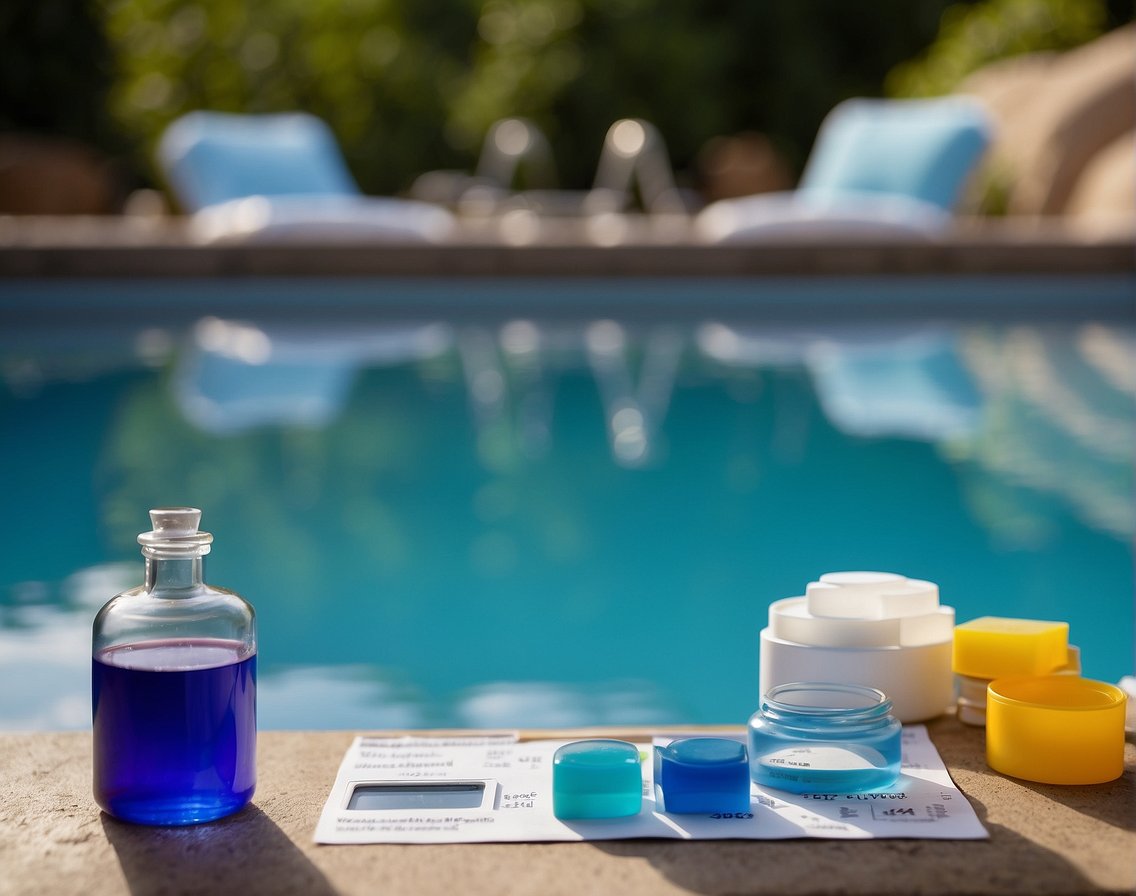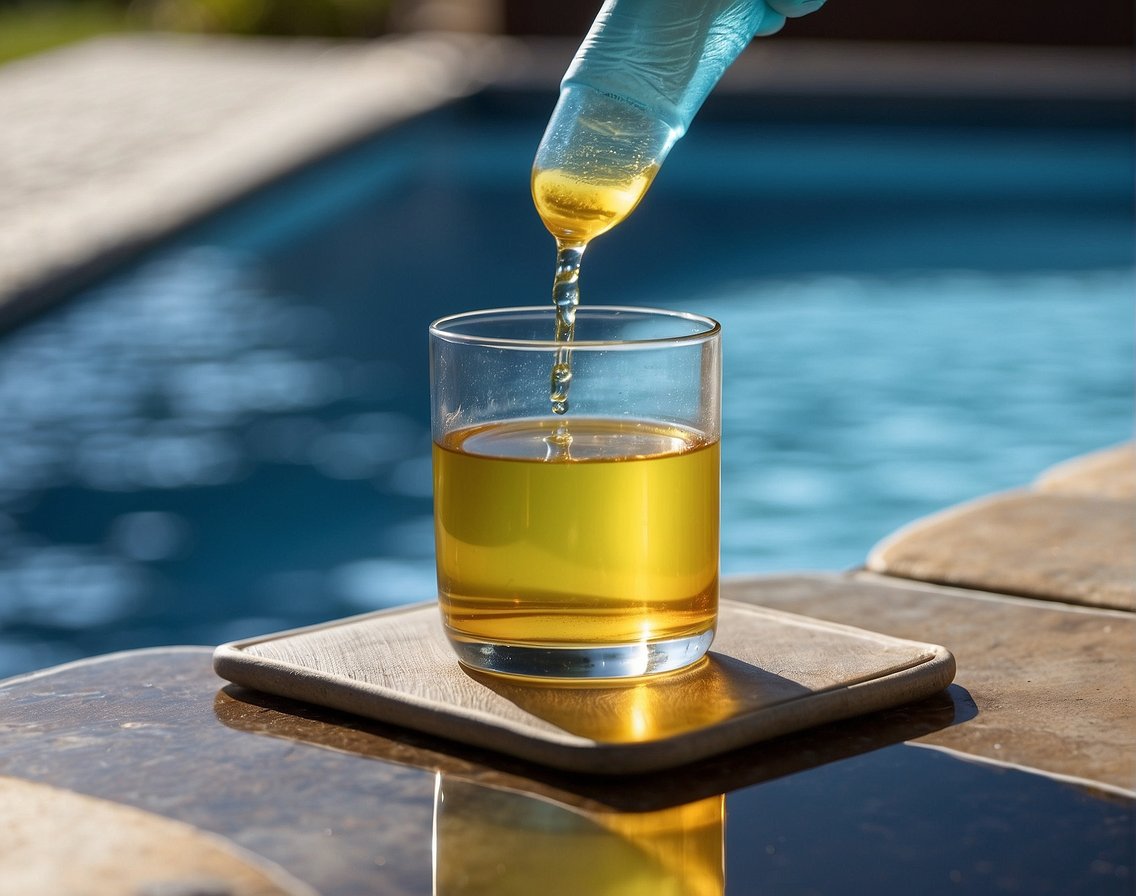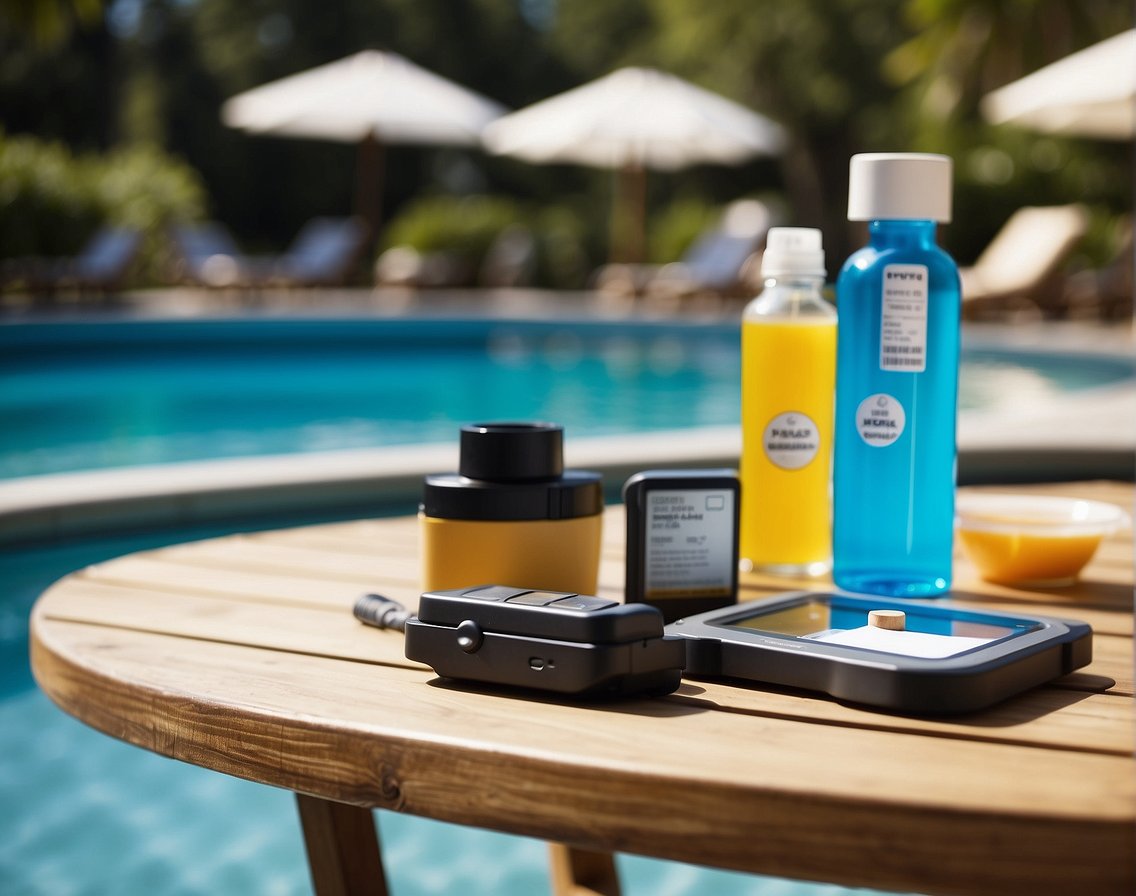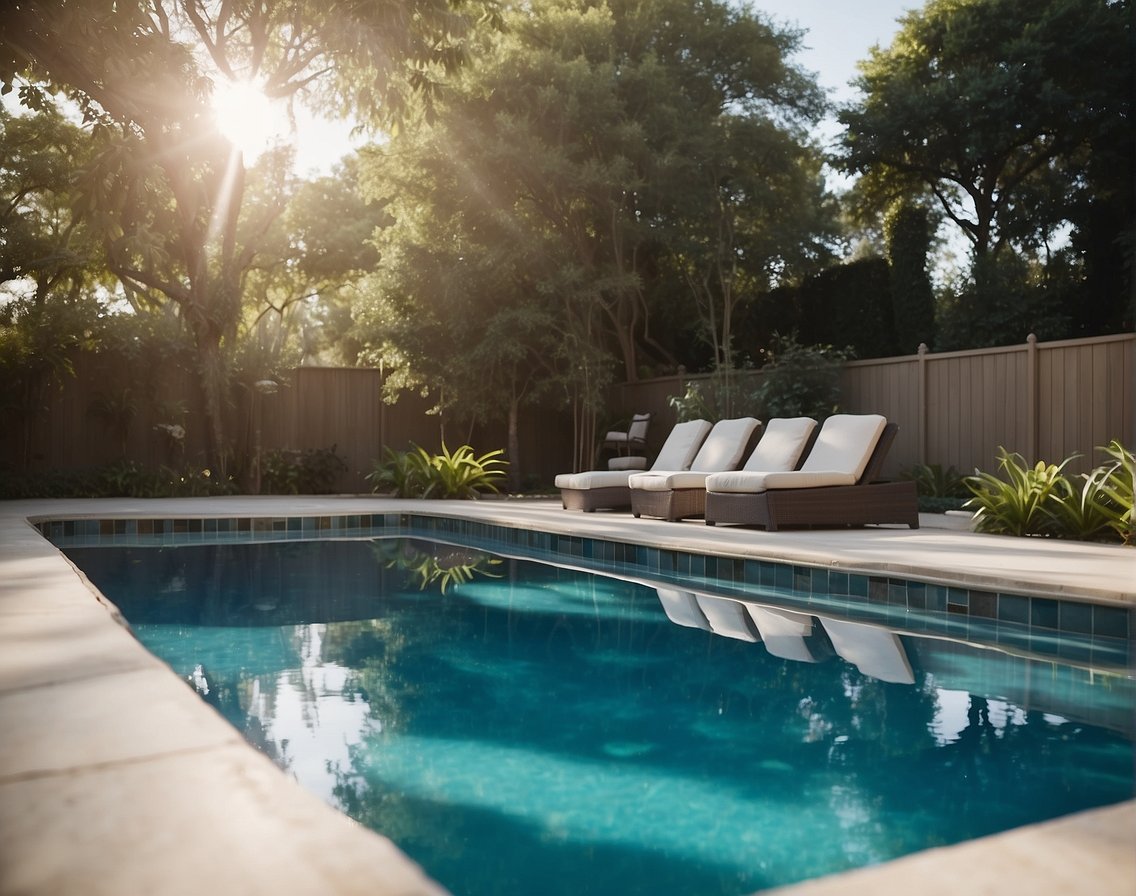Understanding Pool pH Levels

Maintaining optimal pH levels in our pool is crucial for both the safety and comfort of swimmers as well as the longevity of the pool equipment. The pH scale, which ranges from 0 to 14, measures how acidic or alkaline the water is. A pH of 7 is considered neutral. Levels below 7 are acidic, and levels above 7 are alkaline.
Ideally, we want to keep our pool’s pH level between 7.2 and 7.8. This range is safe for swimmers and helps chlorine work effectively at sanitizing the water. If the pH level drifts below 7.2, the water becomes too acidic. This can cause irritation to swimmers’ eyes and skin, and it can also corrode the pool equipment and surfaces. On the other hand, if the pH exceeds 7.8, the water becomes too alkaline and can lead to cloudy water, scaling, and decreased effectiveness of chlorine.
To measure the pH level, we should use a test kit or test strip. Testing kits are available in different types, from simple reagent kits to electronic testers. Regardless of the type, regular testing is a key part of water chemistry maintenance. It helps us to adjust the pH timely and accurate. A standard practice is to test the water at least once a week.
- Acidic Water: Add a base to raise pH
- Alkaline Water: Add an acid to lower pH
Correcting the pH balance is a delicate process and we must follow the instructions for our chosen chemicals closely to avoid fluctuations that can be just as harmful as an unbalanced pH.
Balancing pH with Chemicals

We’ll explore how to adjust the pH levels in swimming pool water effectively, using various chemicals to ensure safety and optimal swimming conditions.
Increasing pH Levels
If our pool water tests show that the pH level is below 7.2, increasing it is crucial for swimmer comfort and to prevent corrosion. To raise pH, we can use a pH increaser like sodium carbonate (soda ash) or sodium bicarbonate (baking soda). The typical dosage for soda ash is about 6 ounces per 10,000 gallons to increase pH by 0.2. In cases where total alkalinity is low, using sodium bicarbonate is beneficial as it boosts both pH and alkalinity.
- Soda Ash (Sodium Carbonate): Effective for significant pH increases.
- Baking Soda (Sodium Bicarbonate): Ideal for minor adjustments and increasing total alkalinity.
Decreasing pH Levels
High pH levels can lead to scale formation and cloudiness. To reduce pH,
we add an acid, such as muriatic acid or sodium bisulfate (also known as pH down). For muriatic acid, we typically add 10 ounces per 10,000 gallons to lower the pH by 0.2. When handling muriatic acid, it’s important to follow safety protocols, as it is highly corrosive.
- Muriatic Acid: Fast-acting for substantial pH decrease.
- Sodium Bisulfate (pH Down): Granular form, easier to handle than liquid acids.
Common pH Imbalance Issues
The common culprits behind pH imbalance in a pool include:
- Rainwater: Can be slightly acidic and affect pH balance.
- Leaves and Debris: Decomposing organic matter can increase acidity.
- These elements can lead to pH fluctuations, causing eye and skin irritation or facilitating algae growth.
Maintaining pH Balance
We ensure pH balance by regularly testing pool water and adjusting chemicals as needed. A consistent schedule for:
- Testing Kit: Utilize test strips or a digital testing kit for accurate readings.
- Water Balance: Monitor and maintain other water balance parameters such as total alkalinity, calcium hardness, and cyanuric acid levels.
Troubleshooting Fluctuations
We address sudden or frequent pH fluctuations by:
- Heavy Rain: After rainfall, it’s advised to test and adjust chemicals.
- High Bather Load: Increase frequency of testing and chemical adjustments.
- If these fluctuations persist, inspecting and servicing pool equipment may be necessary to rule out any potential issues.
Complex Interactions with Other Chemicals
The pH level can be affected by interactions with:
- Chlorine: Both high and low pH levels can diminish chlorine effectiveness, making the pool unsafe by reducing its ability to kill bacteria and control algae.
- Other Chemicals: Always consider the combined effects of all pool chemicals on pH and overall water balance to maintain water clarity and protect the plaster and equipment from scaling and corrosion.
Equipment and Testing for Optimal pH

Maintaining the correct pH level in a pool is vital to ensure that the water is safe for swimmers and to prevent corrosion of pool equipment. It’s essential to choose the correct testing kit and use pool equipment appropriately.
Selecting the Right Testing Kit
When opting for a testing kit, it’s crucial to select one that meets our pool maintenance needs. Test strips are a common choice because they are convenient and easy to use: simply dip and read. However, for more accurate results, we might use a liquid test kit, which involves adding drops of reagent to a water sample. While test strips provide a quick pH reading, liquid test kits can offer a more precise level of analysis, identifying pH levels within a narrower range.
Proper Use of Pool Equipment
Our pool’s filtration system, including the skimmer and plumbing, affects the water’s pH level. Routine cleaning and maintenance of these components prevent buildup that could lead to corrosion or the release of metals into the pool water, which can alter the pH. Additionally, we must regularly inspect the grout and other materials for signs of wear, as corrosive water can damage them over time. Using the right equipment and keeping it in good condition is a straightforward step in managing our pool’s pH.
Automation and Professional Services
For those of us looking for convenience in maintaining optimal pH levels, automation presents an efficient solution. Installing automatic pH controllers can regulate the balance with minimal intervention, constantly monitoring and adjusting the pH as needed. For a more hands-off approach, hiring a professional pool maintenance service is an option. Such services often provide comprehensive care, including pH management, and equip the pool owner with expert insights into the long-term care of their pool.
Health and Comfort Considerations

In maintaining a pool, we focus not just on aesthetic clarity but also on the well-being of swimmers. Ensuring the pH level is balanced is crucial for a comfortable and safe swimming experience.
Effects of Unbalanced pH on Swimmers
When the pH level in a pool strays from the neutral range of 7.2 to 7.8, it can lead to discomfort and health issues for swimmers. An acidic environment, with a low pH, often causes itchy skin and eye irritation, while a high pH can result in a slippery feeling on the skin and a reduced efficiency of chlorine. Our goal is to maintain the pH levels in order to prevent these adverse effects and guarantee a pleasant swimming experience.
Interactions with Skin and Bodily Fluids
Our skin and bodily fluids have a natural pH level close to neutral. That’s why an optimal pool pH level should mimic this to maintain comfort and prevent irritation. Deviation from a neutral pH can lead to skin irritation, rashes, and other discomforts, as the skin comes in direct contact with pool water. We also consider how substances like urine and sweat can affect the pool’s pH, requiring us to be vigilant and proactive in our maintenance routines.
Ensuring Safe Swimming Conditions
A key aspect of pool safety is managing the pH level to support the effectiveness of chlorine, which acts as a disinfectant. Chlorine works best in water that is neither too acidic nor too basic. We constantly monitor and adjust the pH to ensure it’s in the optimal range, thus keeping the water sanitized and reducing risks of infections. By doing so, we preserve the comfort of swimmers and the integrity of the pool infrastructure, preventing corrosion and damage to pool surfaces and equipment.
Frequently Asked Questions
Ensuring the proper chemical balance in your pool is crucial for the safety and comfort of swimmers, as well as for the longevity of the pool equipment.
What are the consequences of having a pH level that is too high in my pool?
When the pH level in your pool climbs too high, it can cause scale formation on the pool surfaces and plumbing, reduce the effectiveness of chlorine, and lead to cloudy water. It can also irritate swimmers’ eyes and skin.
What is the best method for lowering the pH level in my pool?
The most effective way to lower the pH level is to use a pH reducer, such as sodium bisulfate or muriatic acid. Always follow the manufacturer’s instructions carefully and add the chemical slowly, then allow the water to circulate before retesting.
How can I quickly adjust my pool’s pH level if it is too low?
To increase the pH level, you can add a pH increaser, which is typically sodium carbonate (soda ash). Just like when lowering pH, add the increaser gradually and wait for the water to circulate before retesting.
What steps should I take to maintain a stable pH balance in my pool?
Maintaining a stable pH balance involves regular testing and adjustments, using a pool cover to reduce contamination, and ensuring that total alkalinity levels are within the correct range, as they buffer the pH.
How often should I test and correct the pH level in my pool?
We recommend testing the pH level at least once a week under normal use and more frequently during heavy usage or after a large amount of rainfall. Correct as necessary to keep pH levels within the ideal range of 7.4 to 7.6.
In what order should I correct pool pH and alkalinity levels?
Alkalinity should be corrected first, as it helps stabilize pH levels. Once the total alkalinity is in the 80-120 ppm range, you can then adjust the pH level as needed.
